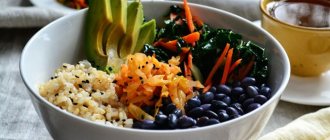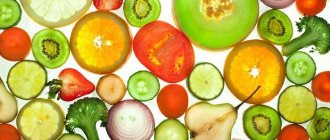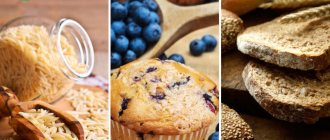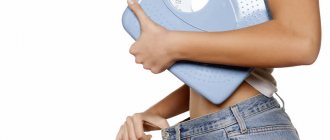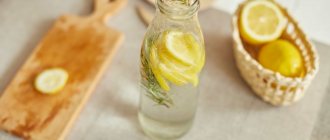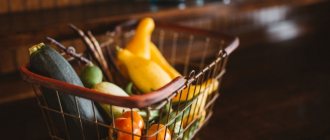Description of the protein-free diet
The essence of a low-protein diet is to reduce the amount of protein in the diet. The macronutrient is not completely abandoned, as it is dangerous for the body. WHO recommends consuming an average of 0.75 g of protein per 1 kg of weight. When dieting, this amount is reduced to 0.55 g. They do not refuse meat, fish and poultry, but reduce the portions.
Healthy people are advised to follow a protein-free diet for no more than 7 days.
Protein-free diet for weight loss
This diet is not considered effective for weight loss. But using this type of nutrition, you can lose up to three kilograms. In addition, thanks to a protein-free menu, your well-being and blood circulation will improve. The body will be cleansed of toxins and waste.
In order to lose weight, this nutrition will not be enough. You should add sports activities to your protein-free diet. The menu must include vegetables and fruits that stimulate metabolism. When following a diet, avoid drinking large amounts of water, no more than one liter (excess overloads the kidneys).
Menu for those who want to lose weight:
- Day one - about two kilograms of tomatoes, cucumbers and other vegetables.
- Second day - menu of the first day.
- Third - to improve metabolism, only apples and pears.
- The fourth day - boiled or steamed vegetables.
- Fifth day - soups, vegetable stew (any dish prepared from fresh vegetables). A small amount of yogurt.
- Sixth day - menu of the fifth day.
- Seventh day - vegetables, greens.
Indications for dieting
The main indications for prescribing a therapeutic diet include cancer, kidney disease and pathologies of the lymphoid tissue of the brain. Sometimes protein intake is limited due to liver disorders. Short-term reduction of the proportion of amino acids in the menu with high blood pressure.
Oncological diseases
Scientists suggest that proteins serve as food for cancerous tumors. The latter produce energy during the fermentation of amino acids. Experiments have shown that the growth of tumors does not stop even with an 80% restriction of meat products on the menu. It is believed that casein stimulates the development of tumors most of all. Some doctors also advise reducing the proportion of methionine in the menu. Without it, the growth of tumors in the mammary glands is impossible.
It is not recommended to completely give up protein, despite research results, since tumors will receive amino acids from muscle tissue. However, moderate restriction slows down the growth of tumors.
Kidney diseases
With kidney disease, their ability to filter deteriorates. This means that metabolic products are removed from the body more slowly. This primarily concerns creatinine, a by-product that is formed during the breakdown of protein molecules. This compound has no functional purpose and is harmful to the body. When it increases, a person experiences muscle pain, weakness, and swelling. To prevent the accumulation of creatinine in tissues, the amount of protein consumed is reduced so that diseased kidneys have time to cope with its excretion.
Pathologies of brain lymphoid tissue
Most often, pathologies of the lymphoid tissue of the brain are oncological in nature. In this case, exclusion of proteins is required to slow down the growth of tumors and prevent the emergence of new lesions.
When following a protein-free diet, you must strictly follow its basic rules.
When is a protein-free diet necessary?
A protein-free diet is prescribed extremely rarely. Only a specialist can recommend it. A urologist conducts a comprehensive examination of the patient’s body and identifies serious kidney damage. Similar dietary restrictions are suggested for renal failure and glomerulonephritis. With severe inflammatory processes in the kidneys, the organ of the excretory system does not perform its assigned functions.
To get rid of the disease, it is necessary to give temporary rest to the entire system. Because of this, the diet changes. Such restrictions are temporary and are introduced under the supervision of medical specialists. Most often, a protein-free diet is prescribed when the patient is being treated in a hospital.
Symptoms to consult a doctor and prescribe a diet:
- Severe tissue swelling
- Disorders of the cardiovascular system,
- Frequent hypertensive crises,
- Difficulty urinating
- Pain in the kidney area,
- Manifestations of general intoxication of the body.
General rules
The general rules of a low protein diet are as follows:
- Salt and hot spices are removed from the diet. You can minimize their number, but it is better to refuse completely. This is especially important for kidney diseases, since spicy and salty foods irritate the kidney tissue.
- The proportion of liquid is controlled. Try to drink 2 liters per day. In case of kidney disease, the amount of fluid, on the contrary, may be limited.
- When preparing dishes, gentle processing methods are used.
- Switch to fractional meals. Eat up to 4-6 times a day. Portions should be small: 250-300 g. You can eat after 18 hours, but you need to have dinner 2-3 hours before bedtime.
- Strength training, sports and any vigorous physical activity are avoided. A low-protein diet is accompanied by weakness. To preserve the functions of internal organs, the body breaks down muscles into amino acids. For this reason, you should not strain yourself, otherwise you will make your exhaustion worse.
They consume approximately 80 g of fat, 350 g of carbohydrates and 20-30 g of protein per day, which is 2200 calories. Macronutrient amounts may vary depending on weight.
It is advisable to make calculations together with a nutritionist.
Authorized Products
The menu includes the following dishes:
- Lean meats: beef, chicken, veal and turkey. It is recommended to boil them first, then bake if desired. The size of one serving is 55-60 g. The meat is served along with vegetable side dishes.
- Low-fat fish: cod, pike perch, pike, pollock, etc. It is preferable to first boil the product, then bake it or eat it as is.
- Vegetarian soups. They are prepared without the use of rich broths. It is allowed to add vegetables or cereals, but not meat. Serving size is 250-300 ml.
- Bread. Only a special protein-free one will do. It is eaten with other dishes.
- Vegetables. Salads and side dishes are prepared from potatoes, cucumbers, cabbage, carrots, beets and tomatoes. In the second case, vegetables are stewed or boiled. It is allowed to decorate dishes with dill, parsley and green onions, if there are no kidney pathologies. If there are diseases, any products with essential oils should be removed from the diet.
- Eggs. Protein omelettes are prepared from them. Serving: 1 egg. You can add butter or vegetable oil to the dish.
- Sago. Serves as a replacement for standard side dishes: pasta, cereals and legumes. Sago does not contain protein or gluten, so it is often added to the diet for therapeutic nutrition. The product is used to prepare casseroles, pies, porridges, cutlets, etc.
- Berries, fruits and dried fruits. The latter are limited in case of chronic renal failure. Additionally, in case of pathology, fruits and berries are consumed only in boiled form, compotes, fruit drinks, etc. are prepared from them. This is due to the need to reduce the proportion of potassium consumed. In other cases, berries and fruits are allowed to be eaten raw.
- Fermented milk and dairy products. You are allowed to eat up to 50 g of cottage cheese or up to 200-300 g of kefir, fermented baked milk, homemade yogurt or any equivalent per day.
- Beverages. Rosehip infusion, natural vegetable and fruit juices, coffee and tea are suitable.
On a diet, it is recommended to eat foods that contain a minimum of protein, and it is forbidden to eat those that contain a lot of it.
Protein-free diet for oncology
This food is prescribed for cancer. The patient needs it to slow down the growth of bad cells and restore the body. After any medical procedure, it is advisable to eat a little raspberry, pomegranate or strawberry. These treats contain vitamins that are so necessary for people diagnosed with cancer.
To strengthen the immune system and block the growth of harmful cells, the menu should include: tomatoes, onions, mushrooms and nuts.
The food that a cancer patient eats should make the immune system work, cleanse the body of dangerous foods, and improve the person’s general condition.
This is why patients with oncology are prohibited from eating fatty and refined foods. Preference should be given to olive and vegetable oil; fish; white cabbage; mushrooms and soy.
The diet of a cancer patient should consist of a large number of plant products:
- vegetables and fruits;
- legumes and cereals;
- fiber.
Meat should not be crossed off the list either. Preference is given to: rabbit, veal and turkey. Fish is a must on the menu. It is a supplier of iodine and polyunsaturated fatty acids.
Complete rejection of products with carcinogens: fast food, smoked meats, processed foods, chips, sausages and confectionery, soda. You can use the diet only after consulting your doctor. After any medical procedures: chemotherapy, surgery and others, the diet is reviewed with the participation of an oncologist.
The daily diet should contain: fifty-five percent carbohydrates, thirty percent fats and fifteen proteins.
After many years of research, it was noticed that some products prevent the development of tumors, stop or slow down their growth. They contain antioxidant substances.
Useful products for oncology include:
- onion and garlic;
- berries;
- green and black tea;
- cruciferous vegetables;
- bee products;
- seaweed, brown algae;
- lettuce, spinach, parsnip, parsley.
Stop the formation of cancer cells: chili peppers, carrots, red beets.
A protein-free diet involves consuming plenty of greens, fruits, vegetables, berries and juices. And all this is necessary for patients diagnosed with oncology.
To prevent and treat cancer, experts recommend eating buckwheat porridge and vegetables for two weeks. The approximate menu looks like this:
- Breakfast – buckwheat porridge cooked in water – 100 grams.
- Snack – apples.
- Lunch – boiled vegetables, a piece of bread without salt.
- Dinner no later than 18.00 - two tomatoes and buckwheat porridge.
Prohibited Products
The list of prohibited products includes the following:
- Meat and fish broths. Protein substances remain in them.
- Alcohol and carbonated drinks, including beer and wine. They aggravate the human condition in pathologies. Drinking alcohol accelerates the breakdown of muscle fibers. Gases in drinks negatively affect the condition of the mucous membranes.
- Flour and confectionery products. Contains vegetable proteins. They are rich in fast carbohydrates, which is bad for your health. There are almost no useful substances in such products.
- Legumes. They are completely removed from the menu because they are rich in proteins.
It is recommended to avoid grains. In the absence of pathologies, you can limit their use. The proportion of milk, animal fats and eggs in the menu is reduced. In case of cirrhosis and kidney pathologies, any salty foods are removed from the diet. This applies not only to marinades and chips, but also to bouillon cubes, nuts in bags, etc. With chronic renal failure, the intake of potassium and phosphorus is limited.
Bread with bran, cheese, bananas, and chocolate are prohibited. Fast food is not consumed, regardless of health status.
Approximate menu for the week
The list of dishes on the menu depends on the person’s health status and the chosen diet option. In the absence of pathologies, it is recommended to prefer a gentle diet.
Gentle option
With such a diet, the menu may look like this:
- Monday. Breakfast: applesauce and apricot juice. For lunch they eat vegetarian soup and a small portion of boiled veal, as well as fruit salad and cherry puree mousse. Dinner: pilaf with sago fruit, egg white omelette and tea.
- Tuesday. 2 soft-boiled eggs and buckwheat porridge in the morning. In the afternoon - vegetarian borscht, boiled potatoes or mashed potatoes, a portion of boiled meat and compote. In the evening - apple and carrot balls, fruit pilaf and apple juice.
- Wednesday. In the morning - vegetable salad, buckwheat cereal and baked apple. In the afternoon - rice porridge, boiled meat, vegetable soup and compote. In the evening - steamed egg white omelette, apple fritters, juice.
- Thursday. Rice pudding, grated carrots, candy without chocolate for breakfast. Lunch - vegetarian soup, rice and boiled chicken with milk sauce, vinaigrette. In the evening - potato pancakes with sour cream, baked apple, vegetable juice.
- Friday. In the morning - protein omelet, fruit salad. In the afternoon - lean borscht without meat, vegetable casserole, stew. In the evening - beetroot and carrot cutlets, milk pudding.
- Saturday. Breakfast - cottage cheese casserole and sour cream, fruit mixture. Lunch - potato soup with vegetables, sliced cucumbers and herbs, rice balls. Dinner - buckwheat porridge with milk.
- Sunday. In the morning - a soft-boiled egg, sago milk porridge with the addition of prunes. In the afternoon - vegetable soup with noodles, boiled fish, mashed potatoes and vinaigrette. In the evening - pilaf from sargo with vegetables and raisins.
Sample menu for a day on a protein-free diet.
Hard option
For a strict diet, the following menu is suitable:
- Monday. In the morning - oatmeal milk porridge with jam, fruit. In the afternoon - cauliflower soup, baked potatoes, berry jelly. In the evening - cabbage rolls, vegetables and rice, rosehip decoction.
- Tuesday. Breakfast - baked cauliflower with sour cream and pancakes, fruit. Lunch - vegetable soup, buckwheat with vegetables, compote. Dinner - vegetable pilaf, jelly.
- Wednesday. In the morning - oatmeal milk porridge, pumpkin puree with jam. In the afternoon - vegetarian soup, mashed potatoes, tea. In the evening - potato pancakes, sour cream, apple juice.
- Thursday. In the morning - carrot and pumpkin casserole with honey, tofu or cheese. In the afternoon - buckwheat soup, zucchini stuffed with vegetables, jelly. In the evening - fruit pilaf from sago.
- Friday. Breakfast - grapefruit, zucchini pancakes, cheese. Lunch - semolina soup with vegetables, pancakes, jelly. Dinner - stewed cabbage, rice, vegetable juice.
- Saturday. In the morning - pancakes on dairy-free dough with honey or jam. In the afternoon - vegetarian borscht, cabbage and vegetable cabbage rolls, jelly. In the evening - millet porridge with pumpkin.
- Sunday. In the morning - oatmeal with milk and dried apricots. In the afternoon - rice soup with mushrooms, mashed potatoes, compote. In the evening - buckwheat krupenik with the addition of raisins, pumpkin and cottage cheese.
Protein-free diet - nutrition principles and menu for the week
Despite the name, the main principle of a protein-free diet is not the exclusion of foods containing protein from the menu. On the contrary, to lose weight you need to consume protein, but in very limited quantities.
The list of allowed foods for a protein-free diet for weight loss includes:
How I lost half my weight in six months
- wheat bread, bran;
- soups with low-fat broth;
- lean meat and fish;
- eggs;
- low-fat cottage cheese and kefir;
- fruits vegetables;
- cereals;
- weak coffee and tea;
- juices and compotes.
As for the strictest prohibitions on a protein-free diet for weight loss, this list includes:
- meat broths;
- salt;
- fresh bread made from white flour.
If this amount of protein products seems not enough for you, turn to a protein diet for a week, where you can lose up to 6 kg.
popular:
- ✅ Strange but effective weight loss methods used by celebrities
- ✅ Effective Biocomplex formula helps get rid of food addiction
- ✅ Minus 24 kg without leaving home! A Muscovite who lost weight in quarantine “blew up” Russia with her recipe
Based on the above lists, with a special protein diet for weight loss, you can create the following menu for the week:
Monday
- Breakfast: cottage cheese, oatmeal and jam;
- Lunch: macaroni and cheese, sausages;
- Dinner: vegetables and diet bread.
Tuesday
- strawberries and cream, weak black coffee;
- millet porridge with prunes, orange juice;
- a sandwich of rye bread and processed cheese washed down with a glass of low-fat kefir.
Wednesday
An innovative drug for losing weight by 30-40 kg! Removes even age-related fat without chemicals, liposuction, diets or exercise. Exercises
- milk porridge with jam, lemon tea;
- stewed zucchini with peppers and tomatoes, apple compote;
- low-fat fish cutlets.
Thursday
- buckwheat and kefir;
- lettuce, carrot and cucumber;
- banana, strawberries and kiwi combined with low-fat yogurt.
Friday
- toast with honey, coffee with cream;
- millet porridge, tea;
- oatmeal with milk.
Saturday
- finely chopped cabbage, cucumbers and sour cream, washed down with a glass of kefir;
- boiled rice with low-fat fish cutlets;
- 250 g chicken meat and tomatoes.
Sunday
- carrot puree, apple compote;
- oatmeal and milk;
- fruits and weak black tea without sugar.
For kidney disease
Protein-free food restriction for weight loss is usually prescribed for various diseases, in order to improve blood circulation and stabilize the functioning of the digestive system. A protein-free diet for kidney disease is necessary for a balanced metabolism.
How to avoid obesity and regain an erection at any age?
It is known that kidney failure will sooner or later lead to the destruction of the entire body. Therefore, in order to avoid this difficult fate, this dietary restriction is recommended for weight loss.
When consuming the recommended products in the menu of the above dietary restrictions for kidney disease, it is not recommended to take any medications, as they create unnecessary stress on this organ.
It is recommended to follow the diet for 1-2 weeks. If your health worsens, reduce fasting days to 1-2 times a week.
You should eat in fractional portions from 4 to 6 times a day, with a minimum calorie content of 3500. Limit salt, dried fruits, nuts, bananas and cottage cheese. The potassium and phosphorus contained in them increases the load on the kidneys.
Also on the list of prohibited items are:
- fatty broths;
- mushrooms;
- chocolate;
- radish;
- food seasonings.
Allowed in this case:
- vegetables;
- cereal;
- pasta;
- compotes, jelly;
- dairy products.
For oncology
The most common protein-free diet for weight loss for a disease such as oncology .
“Space diet” by Sergei Sivokho: without denying himself anything, the comedian lost 42 kg in 3 months
Recipes for a protein-free diet menu for the kidneys are necessary not only for losing weight, but also for restoring the body after medical procedures. After each procedure, it is recommended to eat some strawberries, raspberries or pomegranate. The vitamins contained in these products help slow down the growth of cancer cells.
The main goal of weight loss restrictions for cancer is to inhibit tumor growth and strengthen the immune system. To do this, include foods such as broccoli, nuts, onions, mushrooms, and tomatoes in your menu - they reduce the likelihood of cancer. And if one already exists, they help improve the condition.
Food consumed during cancer should stimulate the immune system, cleanse the body and add energy to the sick person. Fatty and refined foods are prohibited Replace them with white cabbage, fish, vegetable and olive oils, soy and mushrooms.
Before spirography
Using this restriction in the diet for kidney disease for the purpose of losing weight is understandable, but how to adhere to a protein-free diet before spirography?
The study of the functionality of human breathing, that is, spirography, is a frequent and rather unpleasant phenomenon. To make this procedure easier, you must follow a special limited diet menu a week before spirography. In this way, the body will be prepared and the medical procedure will be painless for you and your internal organs.
Since the procedure takes place in the morning, refrain from drinking coffee. Also, two days before spirography, avoid smoking and strong alcoholic drinks. Before the procedure itself, you are allowed to drink water, juices and tea.
Make sure there are no temperature changes and avoid physical activity. It is also imperative to exclude all orange-colored foods from your diet.
For weight loss
If you significantly limit your menu to protein foods, you can lose 2-3 kilograms in just a week.
A protein-free diet for losing weight and normalizing kidney health is not as effective as many others, but thanks to it you will feel much better and avoid many of the side effects that are inherent in the body with sudden changes in diet.
It is prescribed to remove waste and toxins from the body and to improve blood circulation. Under no circumstances should you torture yourself by eating only part of the recommended foods in order to lose many kilograms of weight at once. A protein-free diet is prescribed as a treatment for the body, and not to worsen the condition by losing a lot of weight.
If you want to lose weight, and not just eat recommended foods every day, combine your diet with sports activities, in the form of daily morning exercises, and be sure to get enough sleep.
Dish recipes
To make the menu more attractive, you can try cooking a few new dishes.
Milk porridge with jam
To prepare porridge, take 0.5 liters of milk, 180 g of wheat cereal, rice or oatmeal and 1 tbsp. l. jam. Milk is poured into a saucepan, a little water is added, and put on fire. After boiling, add the cereal and cook for 15-20 minutes, stirring. After the stove is turned off, the porridge is covered with a lid, allowing it to evaporate. Add jam before serving.
Vegetable pickle
To prepare you will need 2 pickled cucumbers, 3 potatoes, 1 carrot, 80 g of rice, parsley, dill, 1 onion and bay leaf. Place a pan of water on the fire, bring to a boil, add all the vegetables, cut into small cubes, except cucumbers. The latter are introduced 10 minutes before readiness along with the herbs, then simmer the dish over low heat.
Stewed zucchini with tomatoes and peppers
To prepare the dish you will need 2 zucchini, 1 sweet potato, 2-3 tomatoes, 1 onion and 1 tbsp. l. vegetable oil. Peppers and zucchini are cut into half rings, and the onion is chopped. Vegetables are sautéed in a frying pan with a small amount of oil. Tomatoes passed through a meat grinder are added to the mixture after 7 minutes, then all ingredients are simmered under a closed lid for 10 minutes. The finished dish is decorated with herbs.
Despite significant restrictions, with a protein-free diet you can eat tasty and satisfying meals.
Vegetarian pilaf
To prepare vegetarian pilaf you will need 2 tbsp. rice, 1 can of canned corn, 1 onion, 2 carrots, 2 tbsp. l. tomato paste and 2 tbsp. l. vegetable oil. First, finely chop the onion and grate the carrots. The mixture is simmered in a frying pan for 5 minutes, then tomato paste and corn are added. After 5 minutes, pour the soaked rice into the frying pan, mix the ingredients and pour boiling water so that the water covers the vegetables. Simmer everything together under the lid for half an hour.
Recommendations from nutritionists
Maria Anatolyevna, 52 years old, nutritionist A protein-free diet is a therapeutic diet that is prescribed for gout, chronic renal failure, oncology and other diseases.
You cannot switch to it on your own, since this is fraught at best with exhaustion, and at worst with the development of chronic pathologies due to a lack of amino acids. The latter are building materials for the body, therefore they are required by all people for normal life. Svetlana Vladimirovna, 45 years old, nutritionist Reducing protein in the diet is justified only if a person has medical indications. To lose weight, it is strongly recommended to reduce the proportion of carbohydrates and pay attention to the quality and quantity of fat consumed. The body needs all macronutrients. With a low-protein diet, the human body suffers from amino acid deficiency, but in some pathologies the benefits outweigh the risks. Healthy people do not need to risk their health.
What is a protein-free diet
This method of losing weight is widely used to relieve protein metabolism and for kidney pathologies, with the exception of severe cases. Athletes are strictly prohibited from combining such a diet with training, because
This combination promotes the destruction of muscle tissue. The very name “protein diet” is conditional, because without the presence of proteins in the daily diet, normal life activity is impossible. Protein is a material that is very important for most metabolic processes. To lose weight using this method, first consult a knowledgeable doctor who, after consultation, can recommend it to you. More often they resort to it to restore kidney function, cleanse the body of toxins and remove decay products.
Principles
Protein-free nutrition for men and women has some principles that must be followed. First of all, a diet without protein, like any other, must have a calorie content that is capable of completely covering the body’s daily energy costs. There are many formulas for calculating the required number of calories, but for simplicity we can assume that this figure is in the range of 2200-2500 kcal.
With a protein-free diet, there are restrictions on the content of salt and water, because... this is necessary to prevent the development of edema, which is a frequent accompaniment of kidney disease . In this case, it is necessary to be careful about the potassium content in the diet. In addition to the presence of kidney disease, you can exclude certain foods from your diet if :
- it is necessary to increase diuresis to eliminate swelling;
- you need to reduce protein metabolism in the body;
- you need to lower your blood pressure;
- it is necessary to increase the release of under-oxidized decomposition products.
Benefits and harms
A diet without protein brings not only benefits to the body, but also harm. The benefit is that it helps normalize protein content, reduce acidity, and reduce blood sugar levels. Such a restriction helps to reduce weight, provided that the diet is properly balanced. The other side of the coin is that when a person refuses proteins, the quality of the skin deteriorates, the hair structure is disrupted, which becomes thin and brittle, and weakness begins to be felt. You cannot use this diet:
- pregnant girls;
- children;
- teenagers;
- To old people;
- when breastfeeding.
Reviews and results
Marina, 37 years old, Voronezh. She set a goal for herself - to lose 5 kilograms by summer.
Beach season was approaching, so I needed to look good. I went on a protein-free diet and began to exercise intensively. I felt terrible, but I was happy to lose 2 kg in the first few days. By the end of the week the goal was achieved, but at great cost. When I began to evaluate the results, I realized that I had suffered in vain. The number on the scales has changed, but the skin has sagged and the defects have worsened. Elena, 34 years old, Krasnodar I wanted to lose weight on a protein-free diet, but did not read the information in advance. I've been struggling with the consequences for six months now. In the first days I lost 3 kg. Now I understand that due to water and limiting salt. A week later, my health deteriorated greatly and I felt weak. After 2 weeks I could barely get out of bed, but I had already lost 5 kg, so I decided to continue. A month later I had to see a doctor: I returned to my previous diet, but began to suffer from digestive disorders, and my condition only worsened. The doctor scolded me and said that the weight I lost was muscle.
